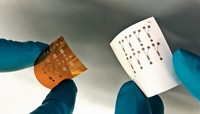Advertisement
Grab your lab coat. Let's get started
Welcome!
Welcome!
Create an account below to get 6 C&EN articles per month, receive newsletters and more - all free.
It seems this is your first time logging in online. Please enter the following information to continue.
As an ACS member you automatically get access to this site. All we need is few more details to create your reading experience.
Not you? Sign in with a different account.
Not you? Sign in with a different account.
ERROR 1
ERROR 1
ERROR 2
ERROR 2
ERROR 2
ERROR 2
ERROR 2
Password and Confirm password must match.
If you have an ACS member number, please enter it here so we can link this account to your membership. (optional)
ERROR 2
ACS values your privacy. By submitting your information, you are gaining access to C&EN and subscribing to our weekly newsletter. We use the information you provide to make your reading experience better, and we will never sell your data to third party members.
Synthesis
Chemical Reactors On Demand
Chemical Engineering: 3-D printer produces custom vessels for chemical synthesis
by Lauren K. Wolf
April 16, 2012
| A version of this story appeared in
Volume 90, Issue 16

Rather than paying experts to manufacture intricate glassware and specialized reactors, chemists of the future may be able to design and fabricate their own inexpensive reaction vessels with the push of a few buttons, according to a report in Nature Chemistry (DOI: 10.1038/nchem.1313).
An international team of researchers led by Leroy Cronin of Scotland’s University of Glasgow used a homemade three-dimensional printer—a device capable of building complicated objects layer by layer—to manufacture polymeric vessels for running chemical reactions. This relatively cheap, automated, and customizable method will make it possible for synthetic laboratories and small companies to access chemical engineering tools typically used only in large-scale industrial settings, the researchers say.
Cronin and coworkers first planned their reactor configuration with computer-assisted design (CAD) software. The resulting blueprint was then loaded into the 3-D printer, which generated the reaction vessel a layer at a time by extruding a fast-curing acetoxy silicone from the nozzles on its printhead. At preprogrammed intervals during the printing, which took anywhere from minutes to hours, the researchers added components to the silicone reactor, such as a glass window for observing reaction progress.
Using the newly manufactured vessels, the researchers synthesized new heterocyclic organic compounds and inorganic nanocluster molecules, demonstrating the reactors’ capabilities. The team also showed that their reactors could become part of the reaction: The scientists impregnated a vessel’s walls with a palladium carbon paste during printing and then used the catalyst-lined chamber to hydrogenate styrene loaded inside.
“This is a fundamental way of blurring the distinction between the reactor and the reaction,” Cronin says. “You could infinitely configure the reaction and reaction space” with this 3-D printing technique.
Among the many demonstration reactions the team ran inside its printed reactors, Cronin says his favorite is one in which the vessel’s geometry dictates a reaction’s outcome. When added in stoichiometric amounts to a large mixing chamber, the reactants 4-methoxyaniline and 5-(2-bromoethyl)phenanthridinium bromide combine to form a dihydroimidazo cationic product containing a C=N bond. A small chamber that limits the ratio of reactants at 1:1, however, mostly yields a tetrahydroimidazo isomer without the double bond.
Although the reaction vessels reported by Cronin and coworkers at this early stage are rather crude, the approach enables “an incredibly broad parameter space—including reactor design, materials, and sequence—that could be explored,” Jennifer A. Lewis says. She is a materials scientist at the University of Illinois, Urbana-Champaign, who has used 3-D printers to pattern conductive inks onto substrates. She adds that she’s gratified to see 3-D printing “employed in such a radically new way.”




Join the conversation
Contact the reporter
Submit a Letter to the Editor for publication
Engage with us on Twitter